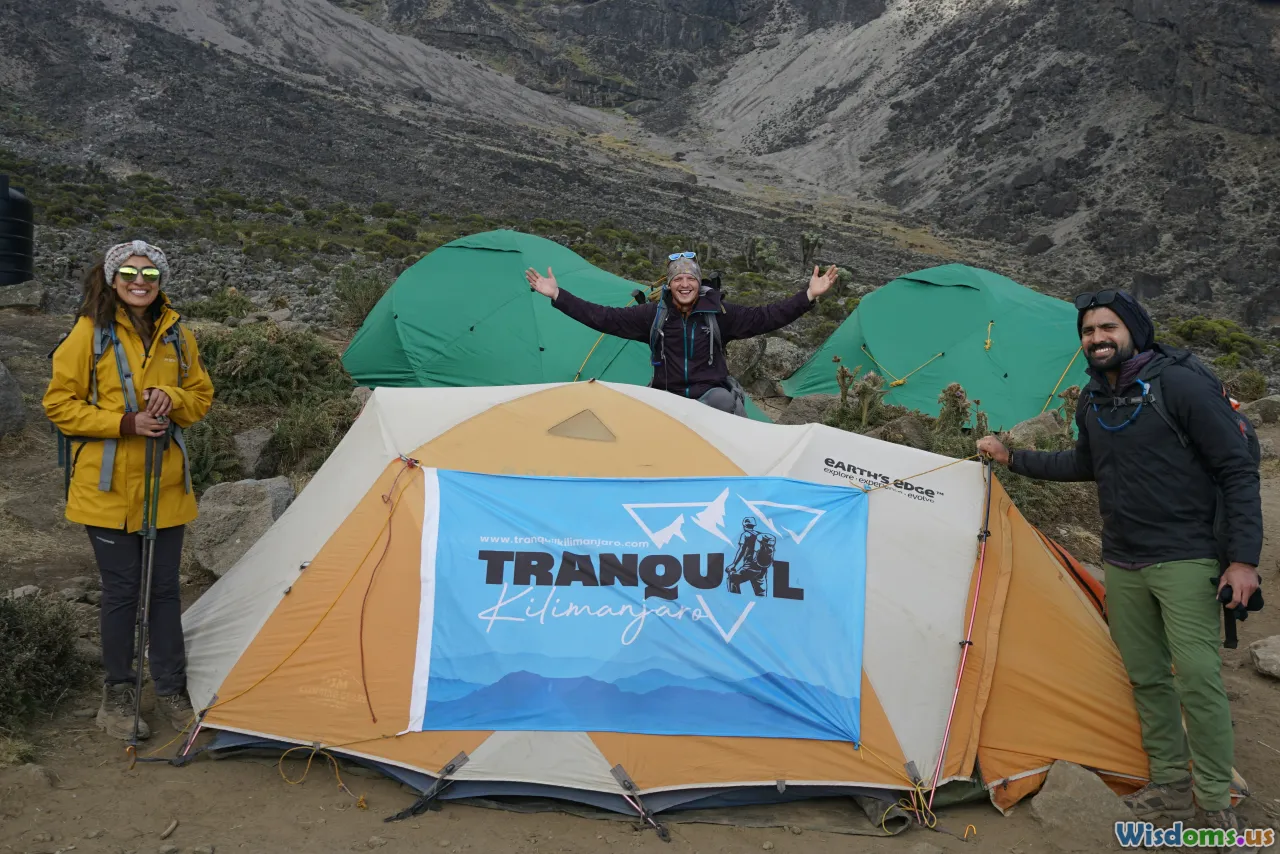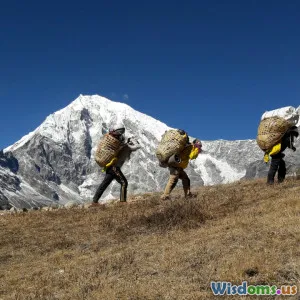
Trailblazers Over 50 Share Expedition Training Secrets
9 min read Discover expert expedition training strategies from inspiring adventurers over 50, blending experience with cutting-edge fitness for unparalleled journey preparation. (0 Reviews)
Trailblazers Over 50 Share Expedition Training Secrets
Embarking on an expedition is challenging no matter your age, but the prospect can be especially daunting as we move past the milestone of 50. Many believe that physical limitations and slower recovery inevitably restrict adventurous pursuits beyond this point. Yet, trailblazing adventurers over 50 shatter this myth daily, summiting peaks, trekking through remote forests, and navigating the world's harshest conditions. How do they do it? What secrets lie behind their training regimens that combine wisdom with physical prowess to master expeditions that would intimidate even younger challengers?
In this article, we dive deep into the training strategies of seasoned explorers over 50, drawing insights from personal accounts, expert guidance, and scientific principles. We will explore how comprehensive training approaches, tailored to the changing needs of mature bodies and minds, empower these individuals to not only participate but excel in demanding expeditions.
Embracing a Holistic Approach to Expedition Training
Balancing Strength, Endurance, and Flexibility
One of the greatest lessons shared by adventurers 50 and older is the importance of balancing various physical components rather than focusing solely on one. While stamina for long treks remains crucial, strength is equally important for stability, safety, and carrying gear.
Case Example: Anna Dickinson, Age 62
Anna, a seasoned mountaineer, attributes her success on a Himalayan trek to her integrated training plan that includes weight training, cardio sessions, and yoga. She remarks, “Strength training helped protect my joints and prevented injuries, which in turn allowed me to keep up with younger team members.” Anna’s routine involves thrice-weekly resistance workouts mixing free weights, bodyweight exercises, and functional training movements.
Scientific evidence supports her approach. A 2019 study published in the Journal of Aging and Physical Activity demonstrated that combining resistance and endurance training improves overall functional capacity and reduces fall risk in older adults.
Prioritizing Recovery and Injury Prevention
Recovery strategies become paramount with age. Trailblazer and ultramarathoner John Mills (age 58) emphasizes, “In my 30s, I could bounce back in days. Post-50, careful attention to rest, hydration, and sleep is non-negotiable.”
Among his strategies are scheduled rest days, using modalities like foam rolling, massage, and contrast baths, and adhering strictly to a 7-8 hour sleep schedule. Incorporating flexibility sessions, such as Pilates or gentle stretching, ensures muscle suppleness and joint mobility.
Mental Conditioning: Building Resilience and Focus
Expeditions test not only physical strength but mental stamina. Trailblazers over 50 often highlight how mental fitness becomes as critical as body training.
Stephanie Morales, a polar explorer at 55, shares techniques such as mindfulness meditation, visualization of challenging scenarios, and journaling reflections to sharpen focus and manage stress. Studies have shown that mindfulness can improve cognitive function and emotional regulation, invaluable during prolonged expeditions.
Customized Training for Changing Physiology After 50
Leveraging Experience With Scientific Training Principles
Advancing age brings physiological changes—a decline in VO2 max, slower metabolism, and reduced muscle mass (sarcopenia). But athletes over 50 compensate by training smarter. This includes periodization cycles, focusing on quality over quantity, and emphasizing functional movements that mimic expedition scenarios.
For instance, retired firefighter and mountaineer Liam Peterson (age 60) uses workout circuits that blend hiking with weighted vests, uphill treadmill walking, lunges, and balancing drills. He explains, “This specificity translates directly to conditions out in the wild.”
Nutritional Adaptations for Optimal Performance
Nutrition also evolves. Maturing athletes prioritize anti-inflammatory diets, adequate protein intake to sustain muscle mass, and hydration strategies tailored to their body's needs. Registered dietitian Maya Chen notes, “After 50, it’s essential to balance macronutrients carefully and incorporate antioxidants to mitigate oxidative stress from intense physical activity.”
Monitoring Metrics With Technology
Many trailblazers incorporate wearable tech to monitor heart rate variability, sleep quality, and exertion levels to prevent overtraining. This data-driven feedback helps finely tune training zones, enhancing safety and performance.
Real-World Training Routines: From Preparation to Expedition Execution
Pre-Expedition Conditioning: Building a Foundation
The preparation phase generally encompasses several months, combining aerobic conditioning (long walks, cycling, swimming), resistance training, and skill work (navigation, first aid). This phase also includes gear familiarization, simulating load carriage, and acclimation strategies.
For example, Joan Walsh, at age 57, details her routine preparing for a desert trek:
- Monday: Interval training and hill repeats for cardiovascular strength.
- Wednesday: Resistance training with emphasis on core and leg strength.
- Friday: Cross-training with swimming and flexibility work.
- Weekend: Long hikes with weighted backpacks gradually increasing loads.
On-the-Trail Training and Adaptation
Even once the expedition begins, the ability to adjust activity and recovery according to terrain, altitude, and weather remains crucial. Trailblazers underscore listening to their bodies and leveraging team support to manage pacing.
Psychological Strategies: Embracing the Challenge
Visualization exercises before each phase of the journey and maintaining a positive mindset serve as critical tools.
Joe Hernandez, who summited Denali at 54, shares, “I reminded myself daily, ‘You trained for this; trust the process.’ That confidence kept fear in check and focus sharp.”
Inspiring Expeditions by Trailblazers Over 50
- Diana Nyad, 64, famously swam from Cuba to Florida, exemplifying endurance and mental grit.
- Frits Vrijlandt, 67, summited Everest twice, noting how thoughtful acclimatization and pace modification were keys to success.
- Christine Hargreaves, 59, completed a solo kayak trip across challenging waterways in Canada, highlighting technical skill harnessed from decades of training.
Their stories not only inspire but provide testament that age-specific expedition training, holistic wellness, and mental resilience combined make the extraordinary possible.
Conclusion: Redefining Boundaries With Age-Adapted Training
The trailblazers over 50 teach us invaluable lessons: age is not a barrier but an invitation to train with strategy, patience, and respect for one’s evolving physiology. Their expedition training secrets boil down to a thoughtful blend of strength, endurance, recovery, mental toughness, nutrition, and continuous learning.
Indeed, mature adventurers exemplify how wisdom amplifies physical endeavor, debunking myths about ‘too old to try.’ If you are over 50 and contemplating an expedition, let these time-tested principles guide you – your journey may well redefine what is possible, opening exciting new horizons at any age.
Ready to carve your path? Start training smart, listen intently to your body and mind, and join the ranks of those who prove that the spirit of adventure only grows stronger with years.
References
- American College of Sports Medicine. (2019). Exercise and Physical Activity for Older Adults.
- Journal of Aging and Physical Activity. (2019). Combined Resistance and Endurance Training in Older Adults.
- Interview with Anna Dickinson, Himalayan mountaineer.
- Interview with John Mills, ultramarathoner.
- Personal accounts and expedition logs of Frits Vrijlandt, Diana Nyad, and Christine Hargreaves.
Rate the Post
User Reviews
Popular Posts




















